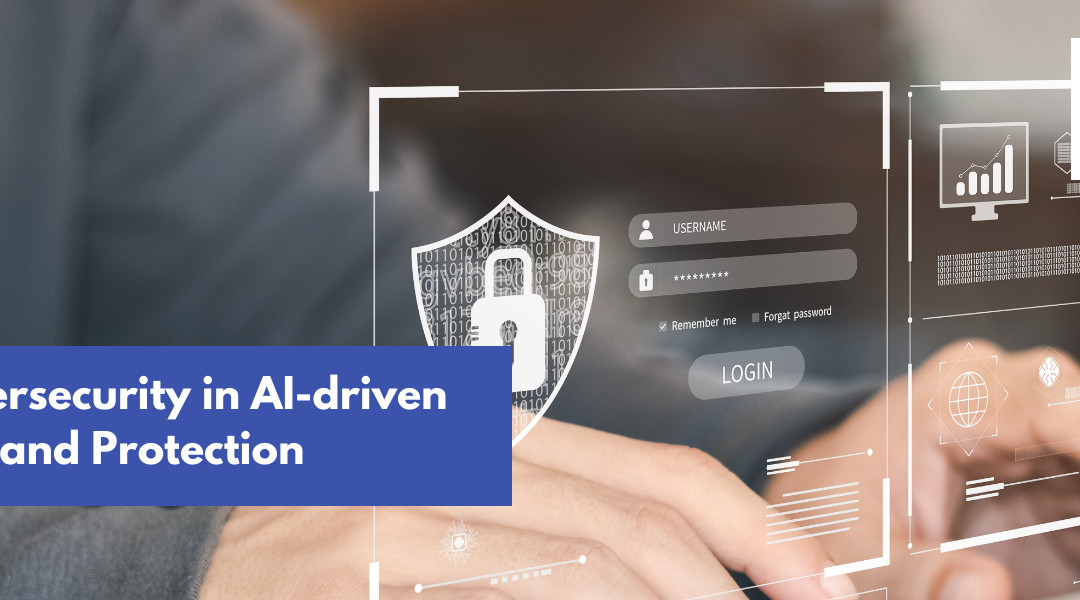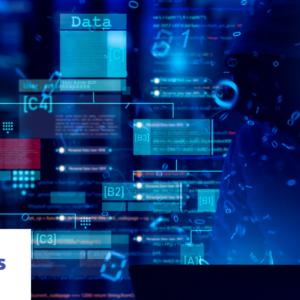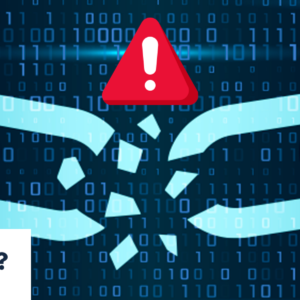This is the First Blog Post for NanoMatriX’s Cybersecurity Series.
AI exploitation poses a serious threat to weakening the cybersecurity of a digital business. When the AI market share reaches 50%, cybercriminals may invest in creating tools to attack AI technologies. Dark AI services like FraudGPT and WormGPT are already available on the Dark Web for launching sophisticated cyberattacks on businesses using AI.
SMEs lose on average $52,000 per cyberattack, while large companies lose over $444,000 per cyberattack. In 2024 alone, there were more than 150 cyberattacks on city government websites in the UK, France, USA, Germany, Canada, Belgium, South Africa, Sweden, Spain, Switzerland, Maldives, and Luxembourg.
Apart from governments, financial institutions, automotive suppliers, health insurance, IT service providers, universities, power grid operators, fintech companies, technology, and solution provider companies are also the target of hackers and an increased risk of cyberattacks.
One simple way for a hacker to access a system and initiate a ransom attack begins with a phishing email containing a deceptive link. Clicking on the link installs malicious software on the victim’s computer, providing remote access. Over time, the hacker observes user activity, gaining insight into the company’s network.
Armed with this knowledge, the hacker launches a ransomware attack, encrypting all company computers and demanding payment for decryption. This scenario underscores how hackers exploit email vulnerabilities to breach organizational data, underscoring the importance of robust cybersecurity measures. Additionally, this method could also be used by hackers to authorize unauthorized bank transfers without the user’s knowledge.
With such sophisticated tools available for exploiting AI technologies for different cyberattacks such as ransomware, password attacks, crypto-jacking, and phishing and spoofing, the need for strengthening cybersecurity so organizations and businesses do not compromise their mission-critical data is becoming more and more necessary.
This blog post will provide the necessary information to business owners to protect their brands against AI-led cyberattacks.
Working on AI-Powered Cyberattacks
1. Automated Reconnaissance and Target Selection
AI-powered cyberattacks utilize artificial intelligence algorithms to automate and optimize various stages of the attack process. Initially, AI conducts automated reconnaissance, scanning networks and systems to identify potential targets and vulnerabilities. Once targets are selected, AI-driven analysis profiles them, gathering information such as organizational size, industry, and security measures in place.
2. Social Engineering and Phishing
Social engineering and phishing tactics are then enhanced through AI, allowing for the creation of convincing, tailored messages designed to trick specific individuals or organizations. AI algorithms assist in crafting these messages using natural language processing techniques to mimic legitimate communication effectively.
3. Malware Development and Deployment
Once a target is compromised, AI helps exploit vulnerabilities and deploy malware optimized for evasion and stealth. This includes the development of polymorphic malware variants capable of dynamically changing their code to avoid detection by traditional security solutions.
4. Evasion and Data Damage
Throughout the attack process, AI techniques enable evasion and adaptation to security measures, allowing malware to adjust its behavior based on environmental factors and responses from security systems. This adaptive capability extends to data exfiltration, where AI algorithms assist in identifying valuable data and prioritizing its extraction while minimizing the risk of detection.
5. Continuous Learning and Adaptation
AI-powered cyberattacks continuously learn and adapt, leveraging reinforcement learning techniques to improve their strategies based on feedback from interactions with target systems and security measures. Organizations must continuously monitor and adapt their defenses to stay ahead of these evolving threats by strengthening their cybersecurity.
3 Considerations for Responsible AI Deployment and Cyberattacks Risk Reduction
To effectively deploy Responsible AI to gain a competitive edge over other businesses, you need to proactively consider cybersecurity, data privacy protection, and compliance.
1. Cybersecurity
Cybersecurity is paramount for organizations implementing in-house AI, necessitating robust measures to safeguard sensitive data and AI systems from cyber threats. Companies should prioritize the following cybersecurity measures:
- Endpoint Security: Employing endpoint security solutions like antivirus software and firewalls bolsters protection against unauthorized access and cyber threats targeting AI systems and data.
- Secure Communications: Utilizing secure communications protocols such as SSL/TLS encryption and virtual private networks (VPNs) ensures the confidentiality and integrity of data during transit between AI systems and other endpoints.
- Data Encryption: Implementing encryption safeguards sensitive data by encrypting it both at rest and in transit, thwarting unauthorized access and preserving confidentiality.
- Vulnerability Management: Conducting regular vulnerability assessments and penetration testing enables organizations to pinpoint and address vulnerabilities within AI systems and data, fortifying defenses against potential cyber-attacks.
2. Data Privacy Protection
Data privacy protection is crucial for ensuring responsible deployment of AI, as it safeguards organizations’ personal information, mission-critical data, and rights. To uphold data privacy while leveraging AI technologies, organizations should implement the following measures:
- Data Minimization: Adopting data minimization practices ensures that only necessary data is collected, processed, and stored for AI applications, reducing the risk of privacy breaches.
- Privacy by Design: Incorporating privacy principles into the design and development of AI systems promotes proactive consideration of privacy implications throughout the development lifecycle.
- User Consent: Obtaining explicit consent from individuals before collecting or processing their data for AI purposes respects their privacy rights and ensures transparency in data usage.
- Anonymization and Pseudonymization: Employing techniques such as anonymization and pseudonymization helps protect individuals’ identities and sensitive information when using AI algorithms.
- Access Controls: Implementing robust access controls and encryption mechanisms ensures that only authorized personnel can access and manipulate sensitive data used by AI systems.
- Data Transparency: Providing individuals with clear information about how their data is being used in AI applications fosters trust and empowers them to make informed decisions about sharing their personal information.
- Accountability and Compliance: Establishing accountability mechanisms and adhering to relevant data protection regulations such as GDPR or CCPA ensures that organizations are held responsible for protecting individuals’ privacy rights in AI deployments.
3. Compliance and Data Governance
Compliance is essential for ensuring the effectiveness of AI deployment against cyberattacks, as it encompasses practices to maintain the reliability, resilience, and integrity of AI systems. To achieve effective AI deployment in the face of cyber threats, organizations should focus on the following quality management measures:
- Robust Testing and Validation: Conducting comprehensive testing and validation processes ensures that AI algorithms and systems perform reliably under various conditions and scenarios, reducing the risk of vulnerabilities exploited by cyber attackers.
- Adaptive Defense Mechanisms: Developing adaptive defense mechanisms within AI systems enables them to dynamically adjust their behavior and responses to evolving cyber threats, enhancing their resilience and effectiveness against attacks.
- Auditing and Reporting: Companies should maintain audit details and reporting processes to demonstrate compliance with regulations and internal policies.
- Incident Response Planning: Establishing incident response plans and procedures specific to AI deployments enables organizations to effectively respond to and recover from cyber-attacks, minimizing disruption and damage to operations and data.
- Regulatory Compliance: Ensuring compliance with relevant cybersecurity regulations and standards, such as the NIST Cybersecurity Framework or ISO/IEC 27001, demonstrates a commitment to maintaining high-quality security practices in AI deployments.
- Data Classification Policies: These policies define how data is classified based on its sensitivity, criticality, and value to the organization. This classification helps organizations understand how to manage and protect their data.
- Data Retention and Disposal Policies: These policies specify how long data is kept, when it should be disposed of, and how it should be destroyed to prevent unauthorized access.
- Employee Training and Awareness: Providing comprehensive training and awareness programs for employees on cybersecurity best practices and the risks associated with AI deployments enhances the human factor in defending against cyber threats.
Implementing AI-powered Cybersecurity Solutions by NanoMatriX
As AI-powered cyber attacks advance in sophistication, conventional cybersecurity measures are becoming inadequate. Organizations must embrace AI-driven cybersecurity solutions capable of detecting and countering these evolving threats. With the appropriate technology and fine-tuning, your defenses can adapt, learning to discern “good” activity and effectively guard against malicious actors.
NanoMatriX’s AI-powered cybersecurity solutions are effective in combatting various types of cyberattacks. Certified compliant with ISO 27001:2022, ISO 27701:2019, ISO 27017:2015, ISO 27018:2019, and ISO 9001:2015, NanoMatriX provides cyber-secure, data-privacy-protected and quality-managed solutions for businesses to protect their mission-critical data.
The AI-driven Cyberattacks are Here to Stay; Strengthen your Cybersecurity
Organizations with fully deployed security and AI automation paid an average of US$ 3.05 million for data breach damages, US$ 1.3 million less than the global average across all security environments, and they detected breaches faster – 249 days compared to 323 days with no AI and automation solutions.
This implies that security breaches and cyberattacks are here to stay, and to reduce our business losses, both in terms of money and data, we need to strengthen our cybersecurity.
So what are you waiting for, contact us now to know how we can cyber-secure your business against AI and other exploitations.
Read the Second Blog Post of NanoMatriX’s Cybersecurity Series Here.
About NanoMatriX Technologies Limited
NanoMatriX is a specialist in providing document and brand protection solutions. To solve our customer’s problems, we provide the following product and service categories:
- Brand-/document protection platforms
- Custom Software development
- Cybersecurity services
- Anti-counterfeiting products
- Consulting services
The competitive advantages of NanoMatriX are:
- Two decades of experience helping brand owners and government agencies fight product and document crime worldwide.
- A unique combination of rare-to-find skills in linking physical overt, covert, and forensic security features with secure digital features.
- Proven rigorous application of top cyber security and data privacy protection standards.
- Multi-lingual, multi-cultural, and collaborative corporate culture.
NanoMatriX Technologies Limited is committed to the highest standards of cyber security, data privacy protection, and quality management. Our systems are certified and compliant with leading international standards, including:
- ISO 27001: Ensuring robust Information Security Management Systems (ISMS).
- ISO 27701: Upholding Privacy Information Management Systems (PIMS) for effective data privacy.
- ISO 27017: Implementing ISMS for cloud-hosted systems, ensuring cybersecurity in cloud environments.
- ISO 27018: Adhering to PIMS for cloud-hosted systems, emphasizing privacy in cloud-hosted services.
- ISO 9001: Demonstrating our commitment to Quality Management Systems and delivering high-quality solutions.






Recent Comments